On July 12, 2021, city planners hosted a special meeting of the Duluth Economic Development Authority (DEDA) at Lot D, on the waterfront, to discuss the site’s potential for future development.
Lot D is a 12-acre plot of land along Railroad Street, with the Pier B Hotel on the east and the North American Salt Company on the west. In decades past, the Chun King Chinese food factory was located on Lot D; today, nothing remains of the factory but a one-acre slab of cement. The site is overgrown with weeds and small trees. During the meeting, commissioners were treated to a close-up view of the port’s industrial activity, as a ship offloaded salt to the west.
The city acquired Lot D in the 1990s, but only really began thinking about redeveloping the site in 2012. In that year, DEDA secured a $200,000 federal grant, which paid for structural studies and environmental cleanup on the site. The studies determined that the Chun King foundation slab was resting atop wood cribbing, and that the seawalls were in terrible shape. Like much of Duluth’s waterfront, Lot D is built on what was once a bog.
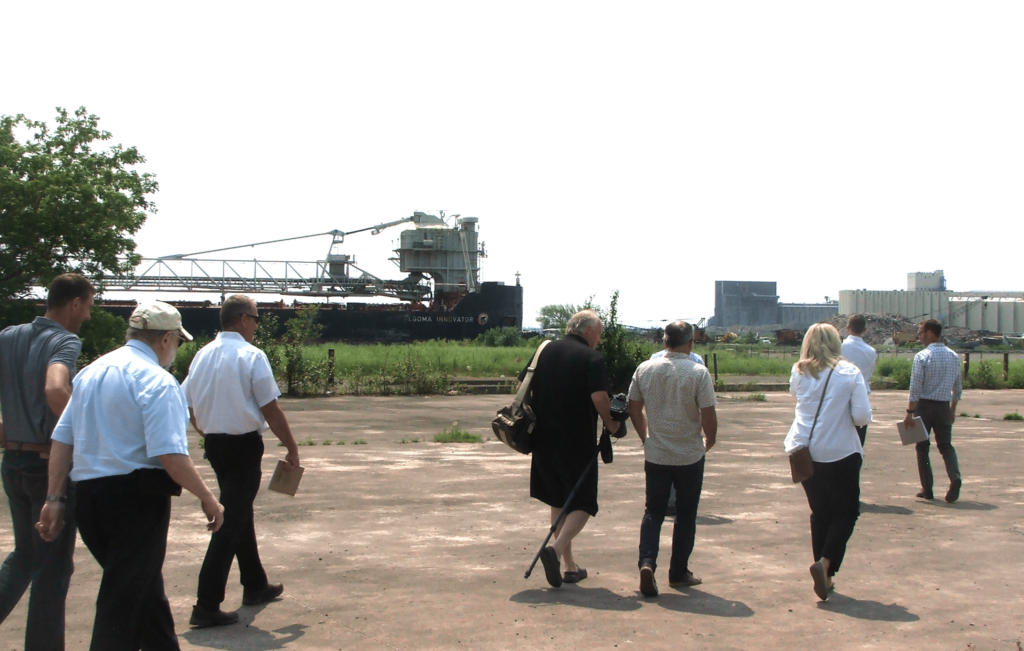
In 2016, DEDA issued a Request for Proposals for Lot D, and received several responses. They selected a proposal from Alex Giuliani and Sandy Hoff, developers of the Pier B Hotel next door. Mayor Emily Larson held a press conference to announce the partnership. As envisioned, the Hoff/Giuliani plan would include “waterfront retail/commercial space,” “no less than 80 units of market-rate housing,” “a public-private parking structure,” and an “owner-operated public market hall space with a public splash pad/fountain.”
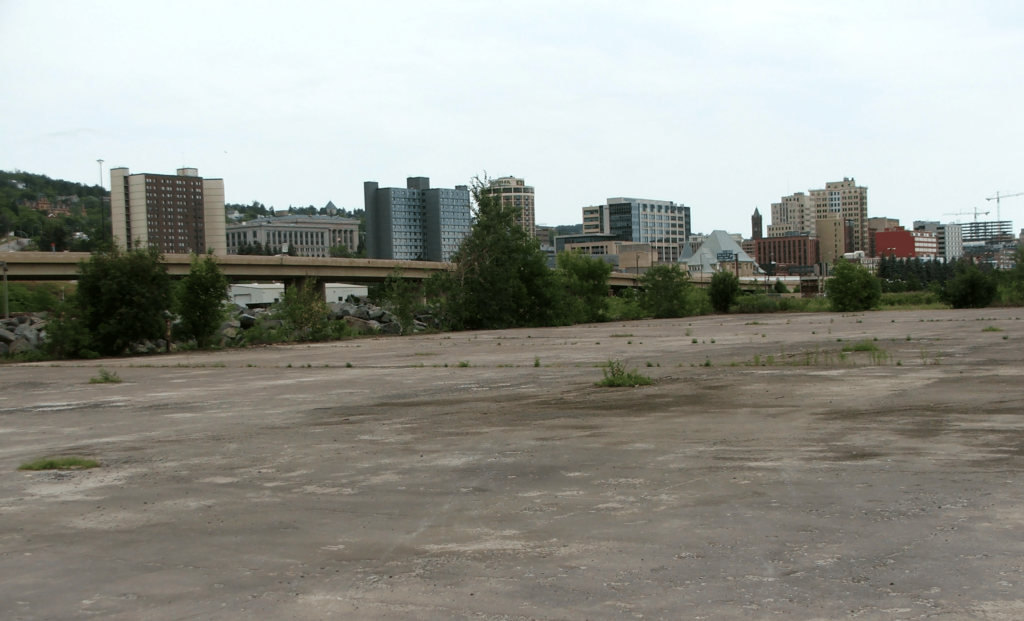
The city worked with the developers for more than two years, but the challenges of the site proved too great to surmount. “What we’re dealing with from a development standpoint is environmental issues which are typical for the waterfront,” Hoff told the Duluth News Tribune in 2019. “Realistically, at a minimum, you need about $10- to $15 million [to clean up and stabilize the site], just to get out of the ground so you’ve got a development project.” Eventually, Hoff/Giuliani abandoned their plans for Lot D.
In 2019, the city secured special state legislation which will allow them to use Tax Increment Financing (TIF) to help fund projects on Lot D. TIF is an economic development tool which provides loans to developers for a project. When a project is completed, the property taxes for the land increase, and the developer uses the newly-generated taxes to pay back the loan. Essentially, what this means is that, for the term of the TIF loan, the city only collects property taxes on the value of the property before it was improved. Once the loan is paid off, the additional property taxes start to flow to the city as usual. Cities use TIF to encourage development in places where steep upfront costs may prohibit developers from committing to a project. (I sense a few readers are itching to debate the pros and cons of TIF, but we do not have time today.)
DEDA hired the consultants HKGI in early 2021, paying them $23,300 to develop a conceptual plan for Lot D, in consultation with city staff and the mayor. During their presentation on July 12, consultants Jeff Miller and Lance Bernard stressed that the plan (which is still in draft form) was not a proposal for an actual project, but a high-level concept plan meant to define future development.
“It’s really about creating a development framework to start to articulate some of those big ideas and help provide some guidance to facilitate development proposals, and what the city’s expectation is for the site,” said Bernard. “With the city owning the property, this is a unique opportunity for them to control some of that, to really articulate that bigger vision.”
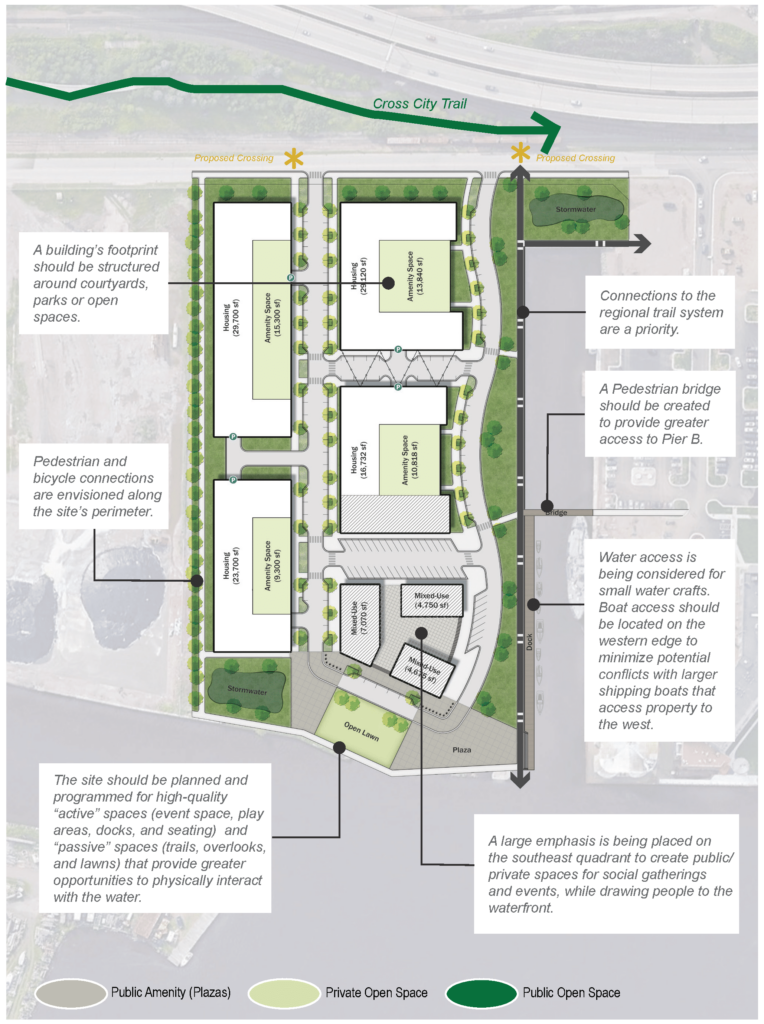
The concept plan calls for housing and parking structures on the site, with a large area along the waterfront reserved for “Mixed-Use” development. Bike and pedestrian paths are laid out along the perimeter of the site, and open lawns and a plaza will offer public space. A pedestrian bridge across the slip on the east side of the property connects to the Pier B property.
“The site should be planned and programmed for high-quality ‘active’ spaces (event space, play areas, docks, and seating) and ‘passive’ spaces (trails, overlooks, and lawns) that provide greater opportunities to physically interact with the water,” states the report. “A large emphasis is being placed on the southeast quadrant [along the waterfront] to create public/private spaces for social gatherings and events, while drawing people to the waterfront.”
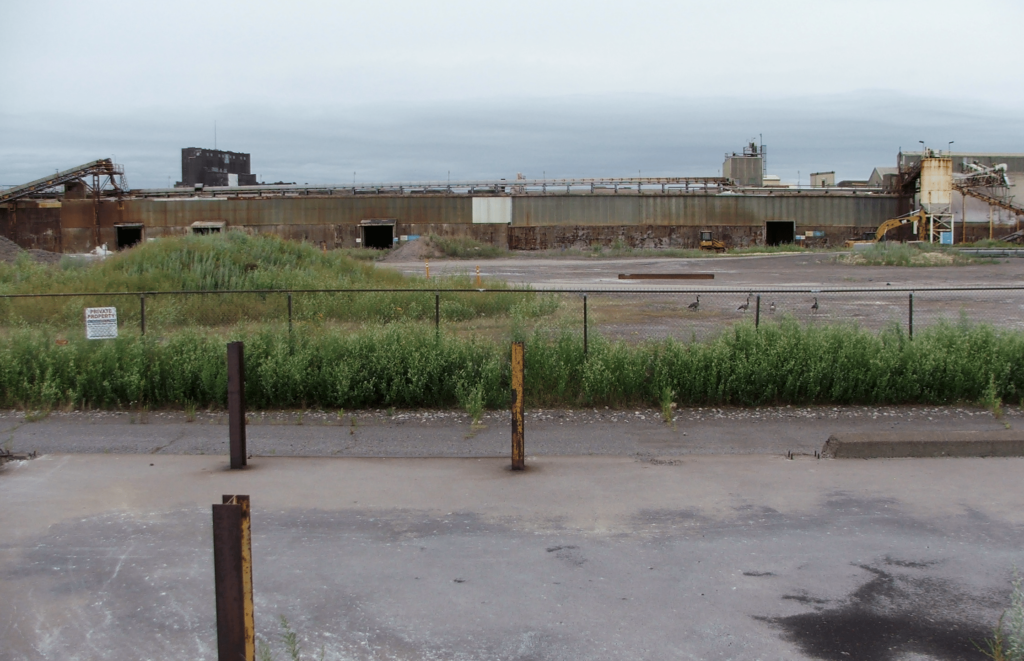
DEDA commissioners seemed generally receptive to the plan, but representatives of the Duluth Seaway Port Authority had concerns. Jeff Stollenwerk, the Port Authority’s director of government and environmental affairs, called attention to the nearby ship that was offloading salt.
“I would just offer to commissioners that this property has served, over the years, as a buffer between heavy industry [over there] and the leisure tourism industry on this side,” said Stollenwerk. “There’s a lot of value in [maintaining] that buffer … You can see the heavy equipment, the trucks, the rail traffic, the vessel…when it starts offloading, it gets noisy. Today, it’s happening at noon, but these are 24-7 operations, so it could be [happening at] two in the morning. I would just consider the value of leaving that buffer there.”
Kate Ferguson, the Port Authority’s director of trade and business development, concurred. “I am very concerned. [The salt plant] is the oldest facility on our harbor, still owned and operating since the 1880s, and they employ over 20 people [at] living-wage jobs. We want to make sure that there is a reasonable buffer for fugitive dust or noise—and also for navigation, for safe approach to their facility, for safe tie-up to make sure that bollards are accessible and usable for the ship, as well as a secure zone around the ship … I don’t want to see the economic activity at that facility hampered by a development here. And that buffer is critically important, especially with residential [areas] and cars [nearby]. There will be dust. We’re right next to a salt facility.”
The consultants did not seem to have considered this at all. The draft concept map shows only a narrow strip of vegetation between Lot D and the salt plant, with housing developments pushed right up to the border. Pearson indicated that they would work on incorporating a buffer zone into the concept plan.
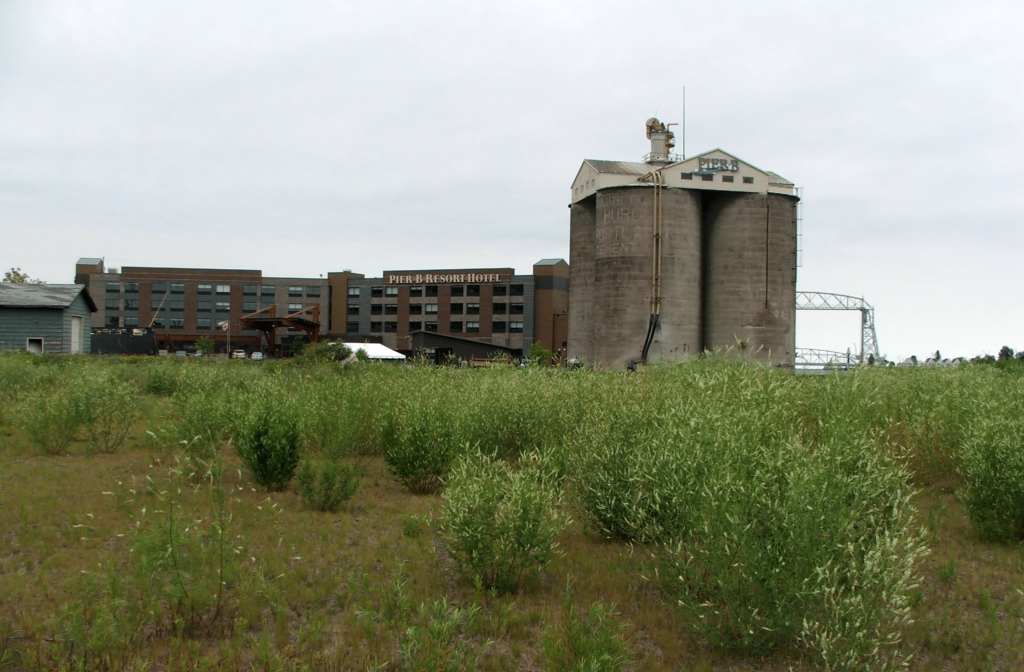
Whatever the concept plan turns out to be, the more immediate hurdle will be the cleanup and remediation of the site, in preparation for development. Hoff/Giuliani had estimated $15 million to do the work in 2019, and construction costs are higher today. Would a developer be willing to shoulder those costs—even with a TIF loan?
“Is this planning effort resting on the assumption that the city or DEDA will come up with the funding for prepping the site?” I asked Adam Fulton, the city’s deputy director of economic development.
“We don’t know,” said Fulton. “I mean, the goal is to find a development partner to rehabilitate the seawall [and] the other infrastructure … This is a concept only. The goal is that we communicate in a coherent way to the developers about what we think the possibilities are.”
Later, I asked Jason Hale, a senior planner with the city, how the city would interest a developer in the site, given the high cost of remediation.
“That’s part of the challenge here,” said Hale. “The infrastructure costs are pretty significant, so how much development has to occur to justify that? … It has to be something that a developer is going to get enough revenue … that can justify a 30-year investment in seawalls or whatever it ends up being … It’s all math, at the end of the day.”
Based on the concept plan, the city will issue a Request for Inquiries (RFI) to determine the level of interest on the part of developers. “We want to broadcast pretty broadly, not just here in the Midwest, but broadcast as far as we can,” said Pearson. “We recognize that there’s going to be more master planning, [and] there needs to be a long-term kind of partnership with the developer to get into the nitty-gritty details … so the development framework starts to help with those conversations. It starts to lay out those expectations, the bigger vision that the city expects for this site.”
According to Deputy Director Fulton, the DEDA board could be asked to vote to approve an RFI as soon as their August meeting. Upon approval, the city will post it publicly, and then wait, with fingers crossed, for the proposals to roll in.
________________________________________________
Cover photo: Deteriorating seawall at Lot D. Credit: John Ramos





